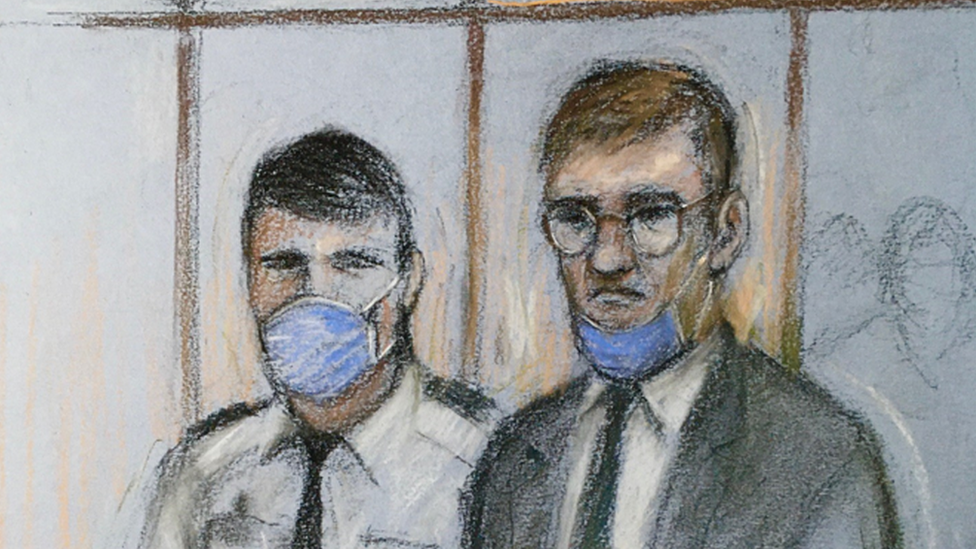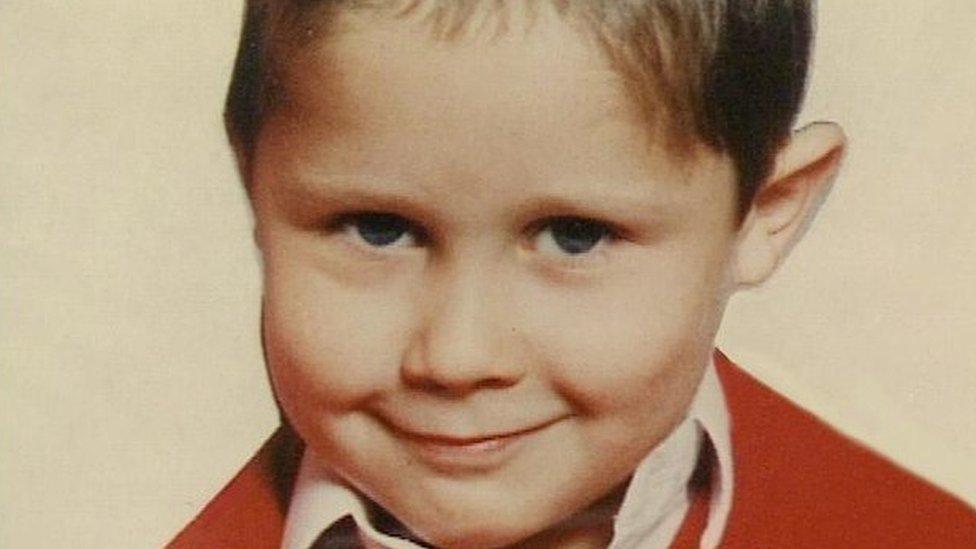Boy made up murder tale before killing Rikki Neave, court hears
- Published

James Watson, 40, is accused of the murder of Rikki Neave almost 28 years ago
A teenager made up a story about a murder and told it to his mother days before a six-year-old boy was killed in similar circumstances, a court heard.
James Watson, now 40, spoke to his mum about a boy being abducted and strangled near to where Rikki Neave went missing days later, the jury was told.
Rikki was found dead near his home in Peterborough, on 29 November 1994.
Mr Watson, who was 13 at the time of the killing, denies his murder.
John Price QC, prosecuting, told jurors at the Old Bailey Mr Watson had made a radio report about an imaginary killing.
He reportedly asked his mother if "a two-year-old boy had been abducted from the Paston area of Peterborough and he had been strangled and left naked off the Paston Parkway", and that the body was found by "the dyke".
"If Watson invented such a report of child murder on Friday, 25 November 1994, what is one to make of the fact that only three days later, on the Monday, such a rare and terrible thing did happen in Peterborough?" Mr Price added.
"A local child did go missing. He wasn't aged two, he was six. But this child really was murdered. This child was strangled.
"His body was found just off the Paston Parkway. It was by the dyke. It was naked.
"And this real child had been with the inventor of this bogus radio report on the day he went missing. And, when they were seen together, they were about three minutes' walk from where his body was found."

Rikki Neave, six, was found strangled and naked in woodland in Peterborough in 1994
The trial also heard how Rikki's mother, Ruth Neave, was wrongly accused of his murder after police made a connection with an image found in the family home.
The boy's body had been posed in a star shape similar to Leonardo Da Vinci's Vitruvian Man, the court was told.
Da Vinci's Vitruvian Man is one of the artist's most recognisable works and depicts a figure in two superimposed positions within both a circle and a square frame.
Police investigating the boy's murder found a book containing the famous drawing at Ms Neave's house.
Mr Price said: "It was said the posture of the image resembles the way her son's naked body had been posed by his killer."

Police on the scene shortly after the murder of Rikki Neave in Peterborough in 1994
The court heard that in a 1994 statement to police, Mr Watson said he had skipped school and gone to the Welland Estate in Peterborough, where his father lived, on the day of Rikki's murder.
At around 12:30 GMT, he said he came across Rikki as he watched a digger in the road, but did not know the boy.
In 2016, after new DNA evidence came to light, Mr Watson allegedly changed his story, claiming he had picked Rikki up from behind under his armpits and held him up against a fence to look at the digger.
Mr Price added: "Ultimately the critical question for the jury in this case will be whether such a wide variety of evidence, including the DNA, just happens to combine to incriminate Watson for the simple reason that he is indeed the killer of Rikki Neave or whether, alternatively, may he be a hapless innocent victim of what would be the most extraordinary, implausible, and unfortunate set of coincidences."
The trial continues.

Find BBC News: East of England on Facebook, external, Instagram, external and Twitter, external. If you have a story suggestion email eastofenglandnews@bbc.co.uk, external
Related topics
- Published18 January 2022
